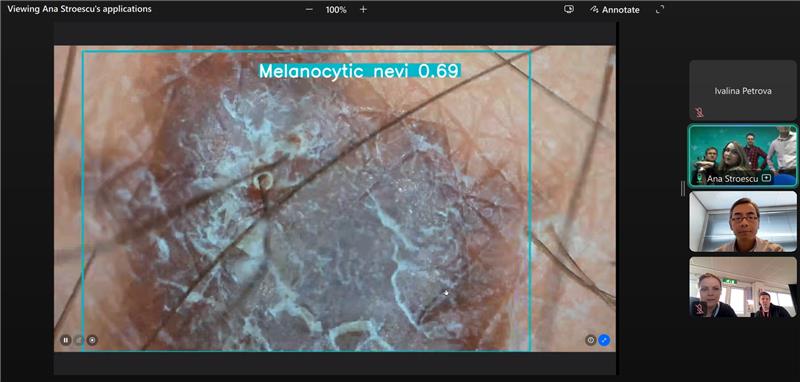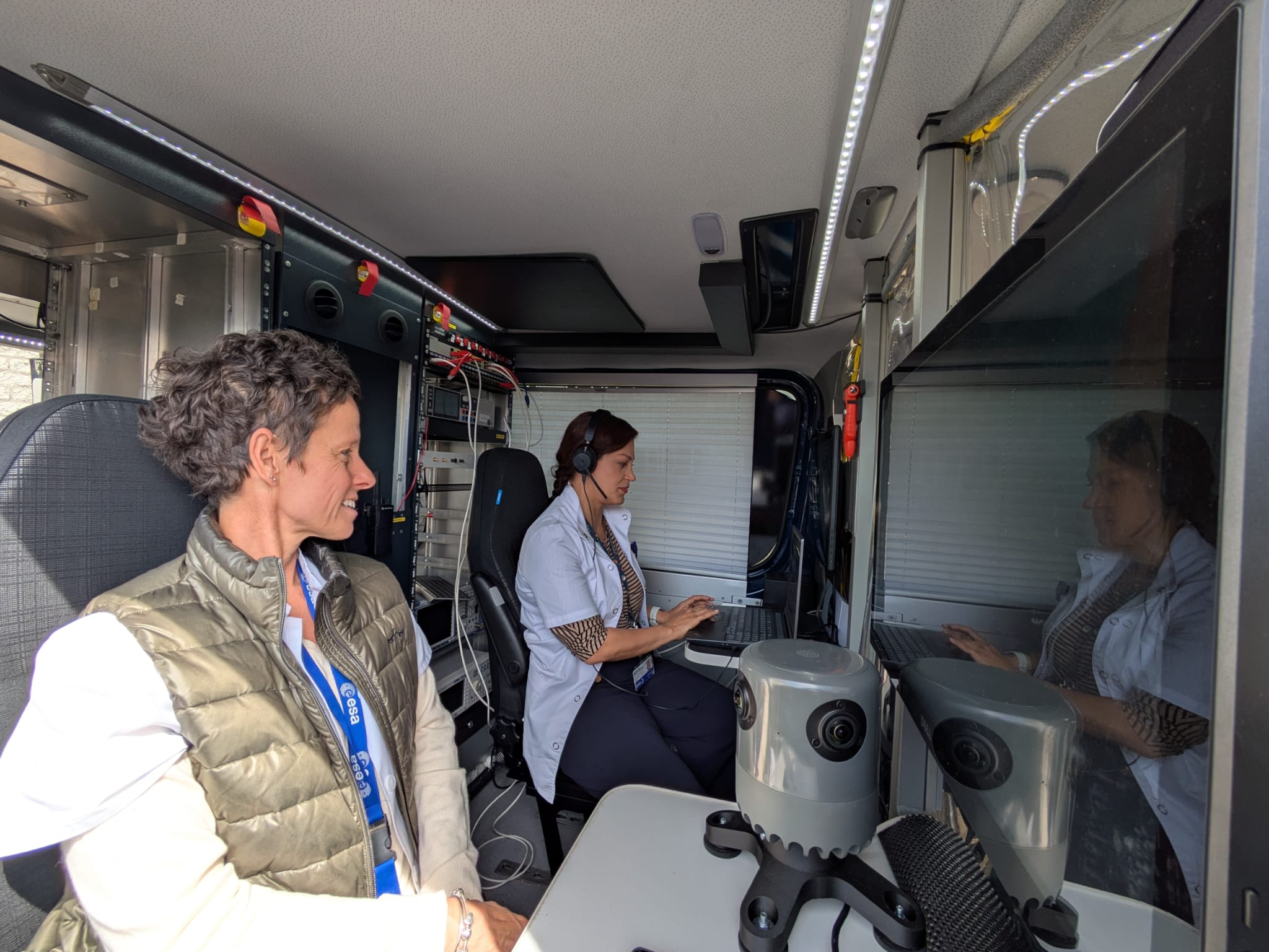ESA and Nokia demonstrate AI-powered telemedicine over integrated satellite 5G network

As part of a telemedicine demonstration, European Space Agency (ESA) teams based at the European Centre for Space Applications and Telecommunications (ECSAT) in Harwell, UK, and the European Space Research and Technology Centre (ESTEC) in Noordwijk, The Netherlands, partnered with leading telecommunications company Nokia to showcase telemedicine applications of the Real-time eXtended Reality Multimedia (RXRM) system.
The demonstration successfully linked ESA’s 5G/6G Hub at ECSAT with the 5G/6G Telecom Lab at ESTEC via a hybrid 5G satellite connection, illustrating how integrated terrestrial and non-terrestrial networks can reliably support critical services – such as healthcare – in areas with limited or no terrestrial coverage. The 5G/6G Hub benefits from UK Space Agency.
The Nokia RXRM system is a multimedia software platform that enhances audio and video quality by only transmitting the user’s active viewport of the 360° view, which the end user looks at on their screen, or their AR/VR headset. It integrates seamlessly with Nokia’s 5G 360° camera featuring spatial audio, leveraging an end-to-end architecture, to enable efficient device-to-device communication while eliminating compatibility issues.

The telemedicine demonstration was conducted as part of a development contract awarded by ESA to Nokia last year, with support from the UK Space Agency. As part of the project, ESA developed an AI-powered computer model for skin cancer screening, designed to support medical professionals by providing a second opinion in identifying suspicious skin lesions. The AI model was seamlessly integrated into the Nokia RXRM architecture, enhancing the system with computer vision capabilities. This integration enables complex medical assessments to be performed remotely – requiring only a stable internet connection and a dermatoscope on site – ultimately improving, and potentially saving, lives through accessible, high-quality care.
By successfully transmitting all patient inputs to the examiner over an integrated 5G satellite network, the Nokia RXRM solution demonstrated its effectiveness in areas of limited or no terrestrial network connectivity. Combined with the embedded AI-based skin cancer screening software developed by ESA to assist clinicians with real-time diagnostic support – this system showcases the potential of terrestrial networks and non-terrestrial networks to enable real-time expert medical support in critical scenarios such as natural disasters, large scale industrial accidents, and even conflict zones.
“In a short time span, Nokia has successfully adapted their RXRM product for a variety of use cases over terrestrial and non-terrestrial networks. With this telemedicine demonstration, Nokia has taken an important and impressive step into providing real-time applications to the medical sector, particularly in remote regions,” said Laurent Jaffart, Director of ESA Connectivity and Secure Communications. “By working closely together, we can leverage the innovative expertise of our industrial partners and expand our technological portfolio for the benefit of our Member States.”
“This demonstration illustrates how integrated terrestrial and non-terrestrial networks are not only essential for global connectivity, but also provide critical, lifesaving resilience when terrestrial infrastructure is compromised. We are proud to collaborate with innovators like Nokia, to demonstrate how real-time telemedicine applications can reach remote and underserved communities. This is a powerful example of how private sector cooperation with ESA can help build a more connected, resilient, and forward-looking Europe,” said Antonio Franchi, the Head of the 5G/6G Non-Terrestrial Network Programme Office at ESA.
“Integrating real-time AI detection with the Nokia RXRM and 360° 5G camera is a game-changer for remote consultations and beyond. This telemedicine demonstration illustrated how AI-enhanced vision can provide immediate, real-time support to practitioners, offering a valuable second opinion and improving early detection, especially in critical areas like skin cancer screening. Whether in healthcare, disaster response, or inspections, this kind of intelligent edge capability is key for any remote operation requiring real-time decision support – especially over satellite links in remote areas,” said Ana Stroescu, who developed and integrated the AI-detection software, as part of her Research Fellowship in AI within the Space for 5G/6G & Sustainable Connectivity programme, part of ESA’s Advanced Research in Telecommunications Systems (ARTES).
"Nokia’s RXRM technology enables high-quality video streaming in rural and hard-to-reach areas, supporting use cases like telemedicine. With up to 90% bandwidth savings of 360° multimedia, it also significantly reduces satellite transmission costs," said Sami Ranta, General Manager, Nokia RXRM.


